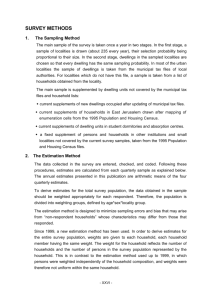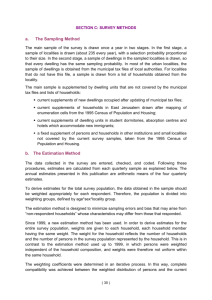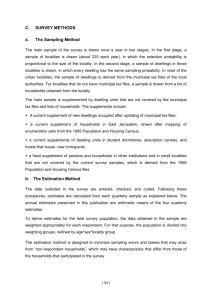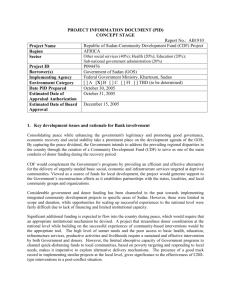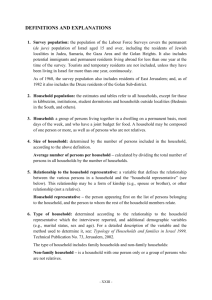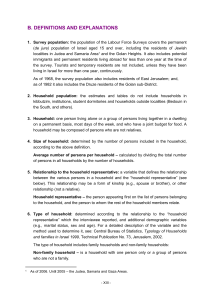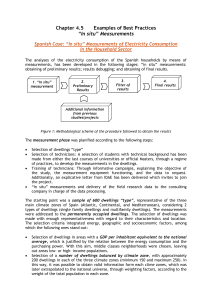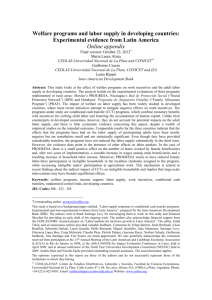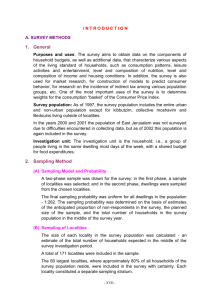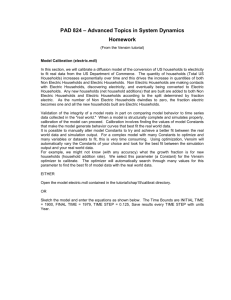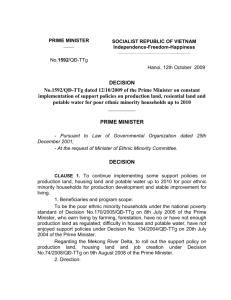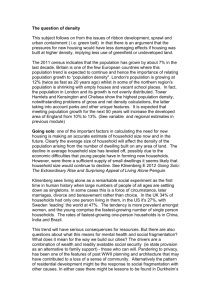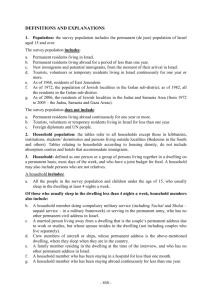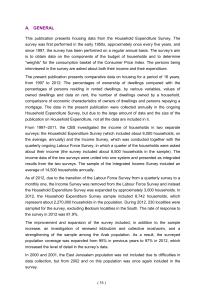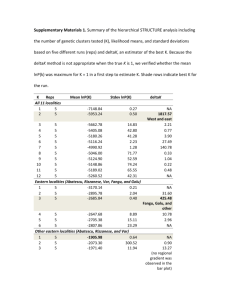SURVEY METHODS
advertisement
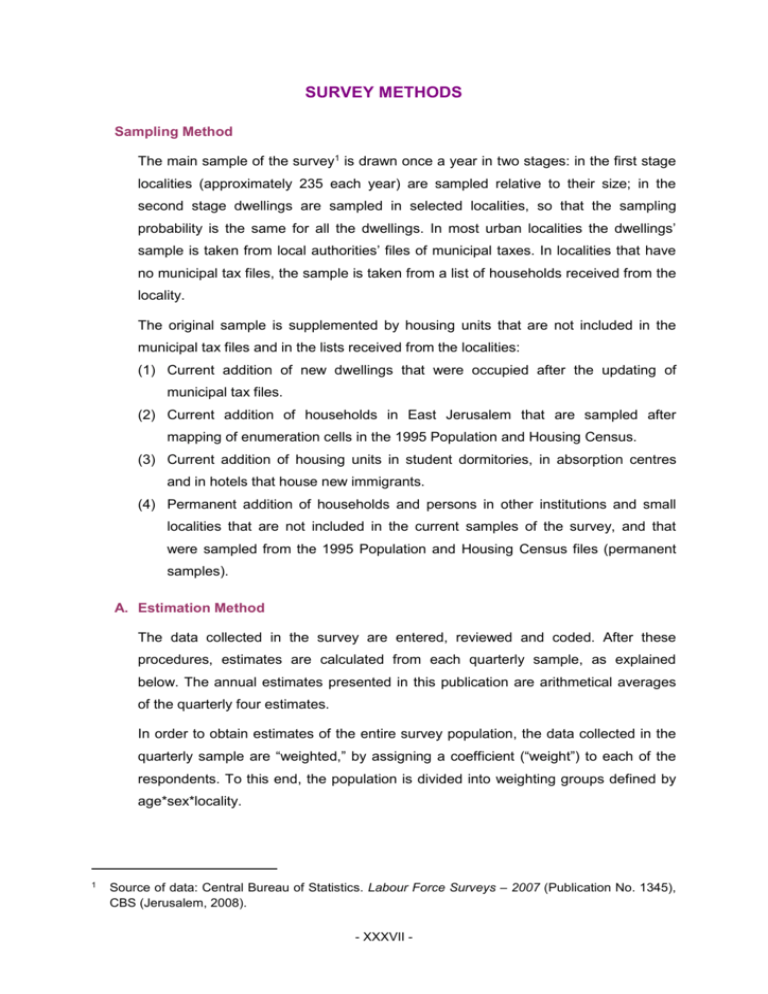
SURVEY METHODS Sampling Method The main sample of the survey1 is drawn once a year in two stages: in the first stage localities (approximately 235 each year) are sampled relative to their size; in the second stage dwellings are sampled in selected localities, so that the sampling probability is the same for all the dwellings. In most urban localities the dwellings’ sample is taken from local authorities’ files of municipal taxes. In localities that have no municipal tax files, the sample is taken from a list of households received from the locality. The original sample is supplemented by housing units that are not included in the municipal tax files and in the lists received from the localities: (1) Current addition of new dwellings that were occupied after the updating of municipal tax files. (2) Current addition of households in East Jerusalem that are sampled after mapping of enumeration cells in the 1995 Population and Housing Census. (3) Current addition of housing units in student dormitories, in absorption centres and in hotels that house new immigrants. (4) Permanent addition of households and persons in other institutions and small localities that are not included in the current samples of the survey, and that were sampled from the 1995 Population and Housing Census files (permanent samples). A. Estimation Method The data collected in the survey are entered, reviewed and coded. After these procedures, estimates are calculated from each quarterly sample, as explained below. The annual estimates presented in this publication are arithmetical averages of the quarterly four estimates. In order to obtain estimates of the entire survey population, the data collected in the quarterly sample are “weighted,” by assigning a coefficient (“weight”) to each of the respondents. To this end, the population is divided into weighting groups defined by age*sex*locality. 1 Source of data: Central Bureau of Statistics. Labour Force Surveys – 2007 (Publication No. 1345), CBS (Jerusalem, 2008). - XXXVII - The estimation method is intended to reduce both the sampling errors and the possible biases due to the difference that may occur between households that did not respond and households that participated in the survey. In 1998 a new estimation method was introduced in the survey. In the new method a weight is determined for each household interviewed; the weight is identical for each person belonging to the same household. Thus the weight of a household expresses the number of households and the number of persons in the survey population that a household represents. This is in contrast to the estimation method that was used up to 1998, when the weights of persons were obtained without relation to the composition of the household, so uniform weights for the various household members were not obtained. The set of weights is determined in an iterative process. At the end of this process, the weighted distribution of persons is compatible with the current demographic estimates of the CBS, which are based on the census of 1995. In 2002 several changes were made in the definition of weighting groups.1 1 Detailed explanations can be seen in the publication: Central Bureau of Statistics. Labour Force Surveys – 2007 (Publication No. 1345), CBS (Jerusalem, 2008). - XXXVIII -
